A hose-end sprayer conversion chart is a reference tool that helps determine the correct dilution ratio for various products when using a hose-end sprayer. It provides information on common products like fertilizers, pesticides, and herbicides, ensuring accurate and efficient application in your garden or yard.
Here, we will dive deep into the hose end sprayer conversion chart. We will explore the key components of hose end sprayers and understand how conversion charts play a vital role in achieving an accurate spray direct application rate. You will also learn to interpret and effectively use a hose-end sprayer conversion chart and important tips for improving your spraying technique. So, without further ado, let’s dive into the details.
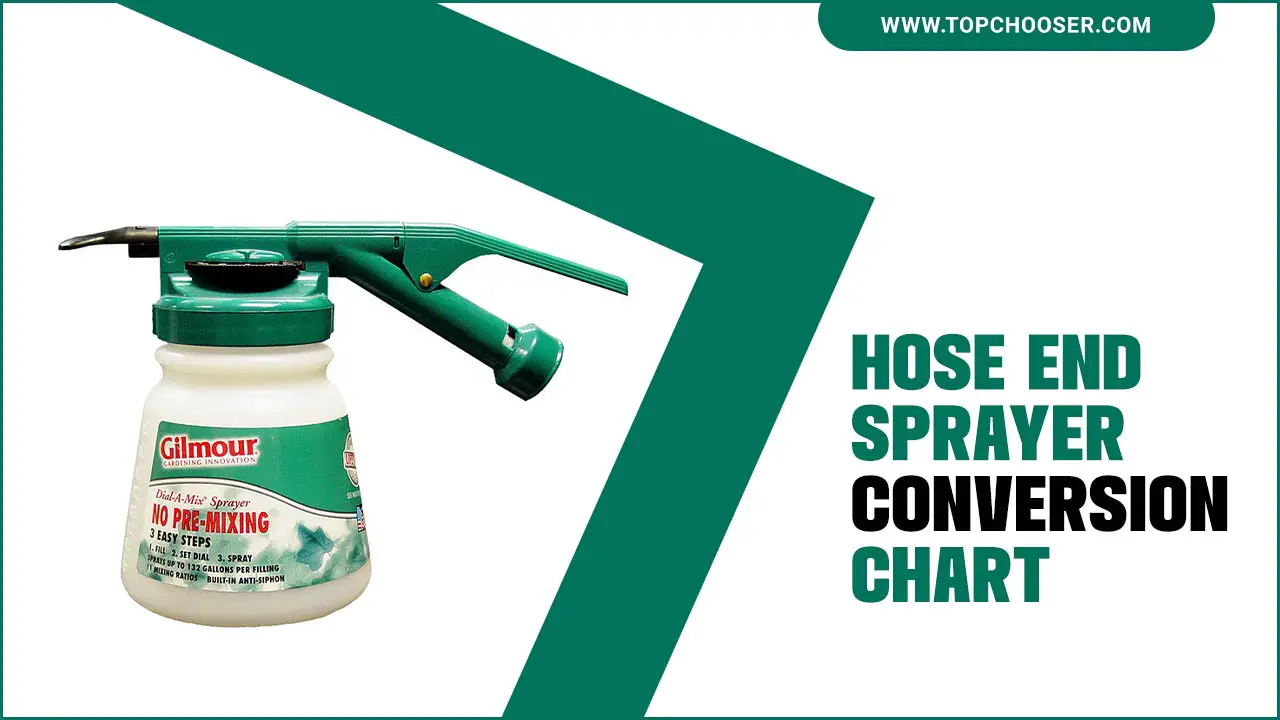
All About Of Hose End Sprayer Conversion Chart
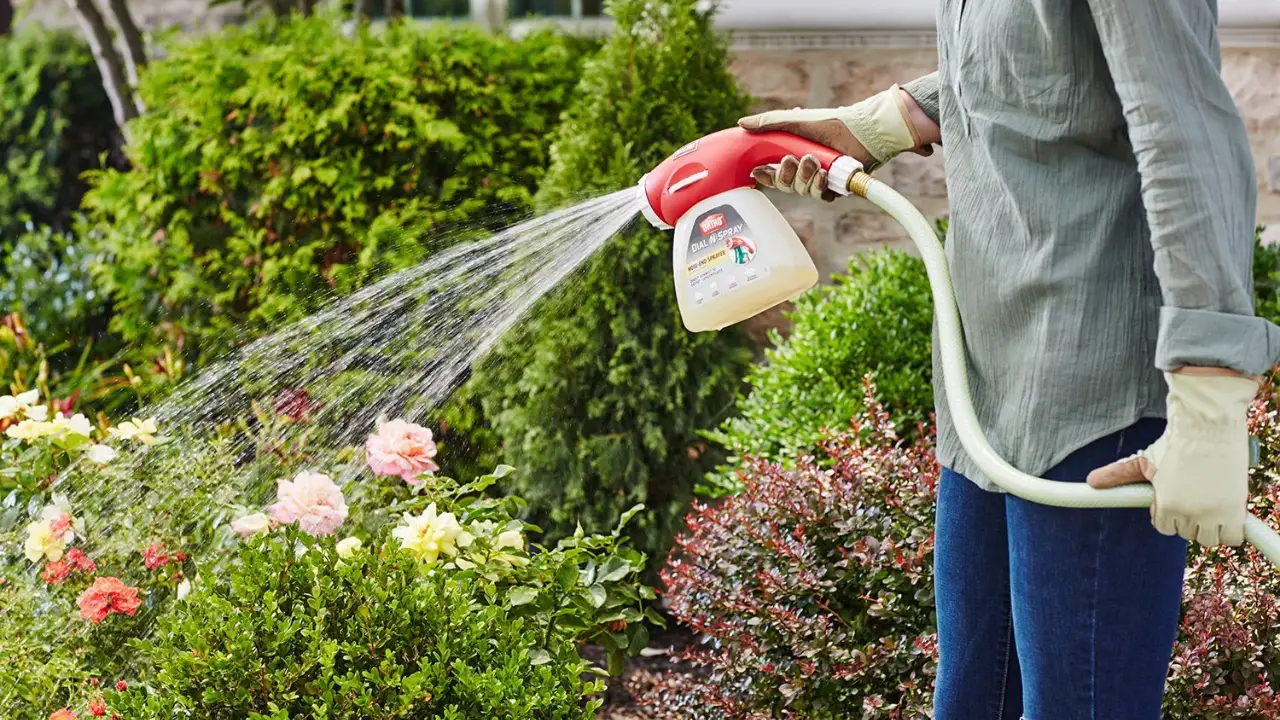
Understanding the hose end sprayer conversion chart is crucial. It helps you mix and apply chemicals accurately, ensuring effective results and preventing wastage. By following the chart, you can achieve the right concentration and avoid over/under-application, saving you money and minimizing harm to plants and the environment.
Knowing the conversion ratios saves time, improves efficiency, and eliminates guesswork for gardening or pest weed controls. Here, we discuss all the charts of hose end sprayer conversion.
Key Components Of Hose End Sprayers
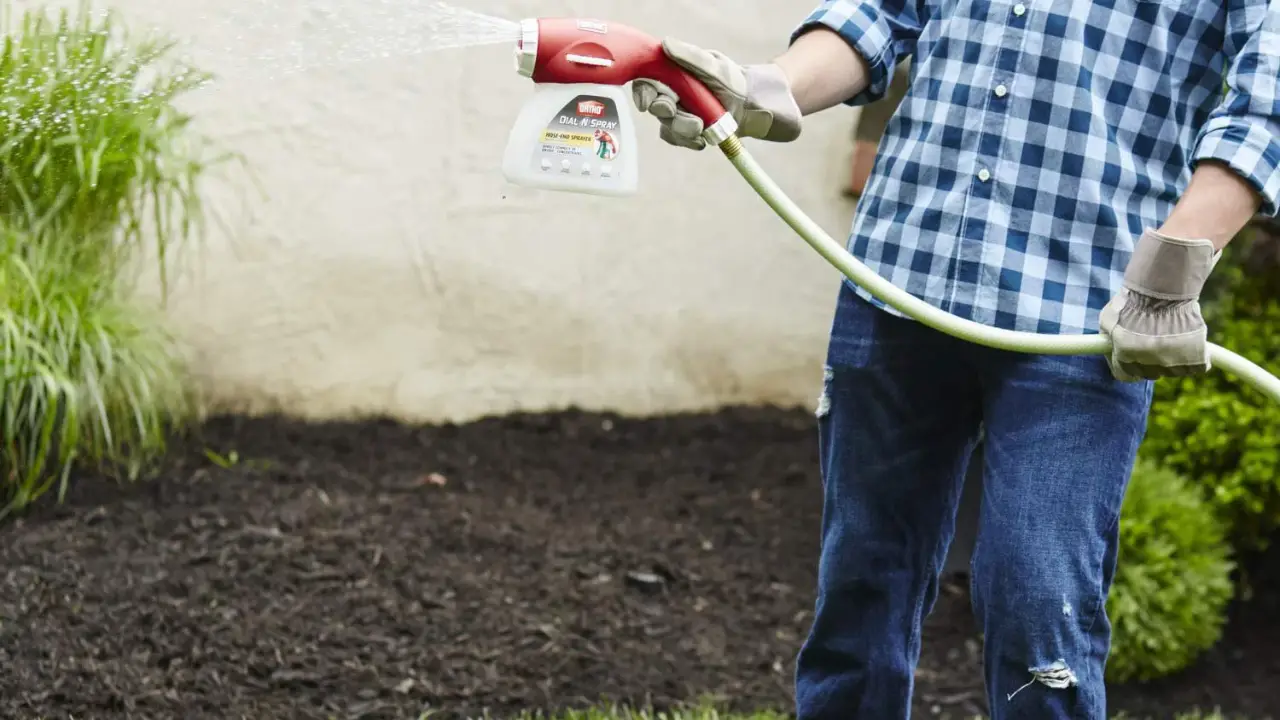
Understanding the key components of hose end sprayers is essential for efficient and effective use. These sprayers typically consist of a bottle with water or a container, a nozzle or spray head, and a connector or attachment for attaching to a garden hose. The bottle or container is where the liquid solution is stored, and it usually has markings or measurements to indicate the dilution ratio for different products.
The nozzle or spray head controls the Flow Rate and pattern of the spray, allowing for targeted application. Finally, the connector or attachment connects the sprayer to a standard garden hose, providing the necessary water flow Tank Size pressure to create a fine mist or spray. By familiarizing yourself with these key components, you can ensure proper use and achieve the desired results when using a hose-end sprayer head.
Conversion Tables, Formulas, And Suggested Guidelines
Getting the right concentration of chemicals for a hose-end sprayer is essential. The conversion tables, formulas, and suggested guidelines on a hose-end sprayer conversion chart provide the information you need to mix and apply products accurately.
The conversion table shows the concentration of chemical products needed for each type of product or application. It also gives the dilution ratio for various products, allowing you to calculate the chemicals needed for each application.
Formulas are also included in hose-end sprayer conversion charts. These formulas give you detailed instructions on mixing and applying products according to the manufacturer’s specifications. The suggested guidelines provide a general overview of product behaviour when applied with a hose-end sprayer. By understanding and following the instructions in a conversion chart, you can achieve accurate results with minimal wastage.
Understanding The Conversion Rate For Different Products
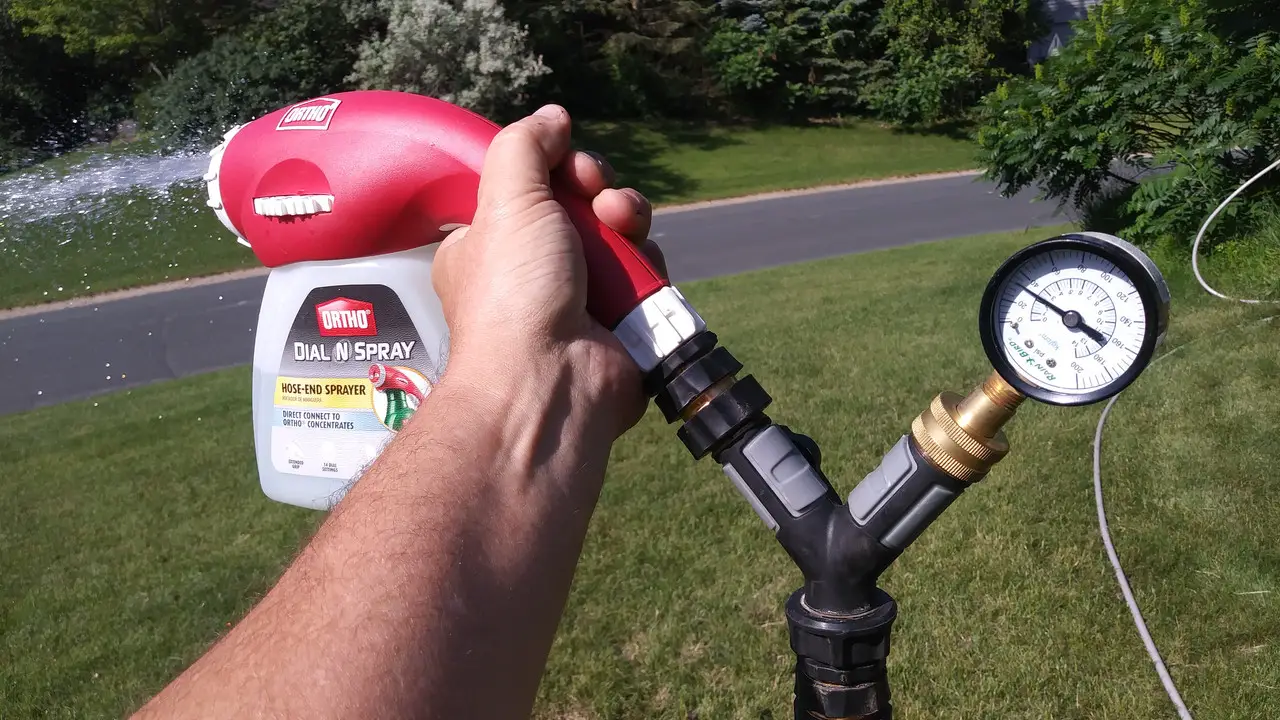
Understanding the conversion rate for different products is essential when using a hose-end sprayer. The conversion chart provides a helpful guide for diluting various products, such as fertilizers, pesticides, and herbicides, to achieve the desired concentration.
By following the recommended ratios, you can ensure that you are applying the correct amount of product to your lawn or garden. This maximizes the product’s effectiveness and helps prevent overuse or waste. Whether you are a seasoned gardener or just starting, referring to the hose end sprayer conversion can save you time and effort in achieving optimal results.
Common Measurements And Dilution Ratios For Various Applications
When using a hose-end sprayer, it is important to have a conversion chart on hand to ensure accurate measurements and dilution ratios for different applications. This can help you achieve the desired results and avoid wasting products or potentially damaging plants or surfaces. Here are some common measurements and dilution ratios for various applications:
- Fertilizer: A dilution ratio of 1 tablespoon per gallon of water is often recommended for general feeding. However, it is important to refer to the specific instructions on your fertilizer product for accurate measurements.
- Insecticide: Dilution ratios for insecticides can vary depending on the concentration of the product and the target pest. As a general guideline, a dilution ratio of 1-ounce product per gallon of water is commonly used for most insecticide applications.
- Herbicide: When applying herbicides, it is crucial to follow the instructions provided by the manufacturer, as dilution ratios can vary greatly depending on the type of weed and the specific herbicide being used. It is also important to consider factors such as weather conditions and application timing for optimal effectiveness.
Having a handy conversion chart can make using a hose-end sprayer pump much easier and ensure that you use the correct amount of product for each application.
Using The Conversion Chart To Determine The Correct Amount Of Product To Use
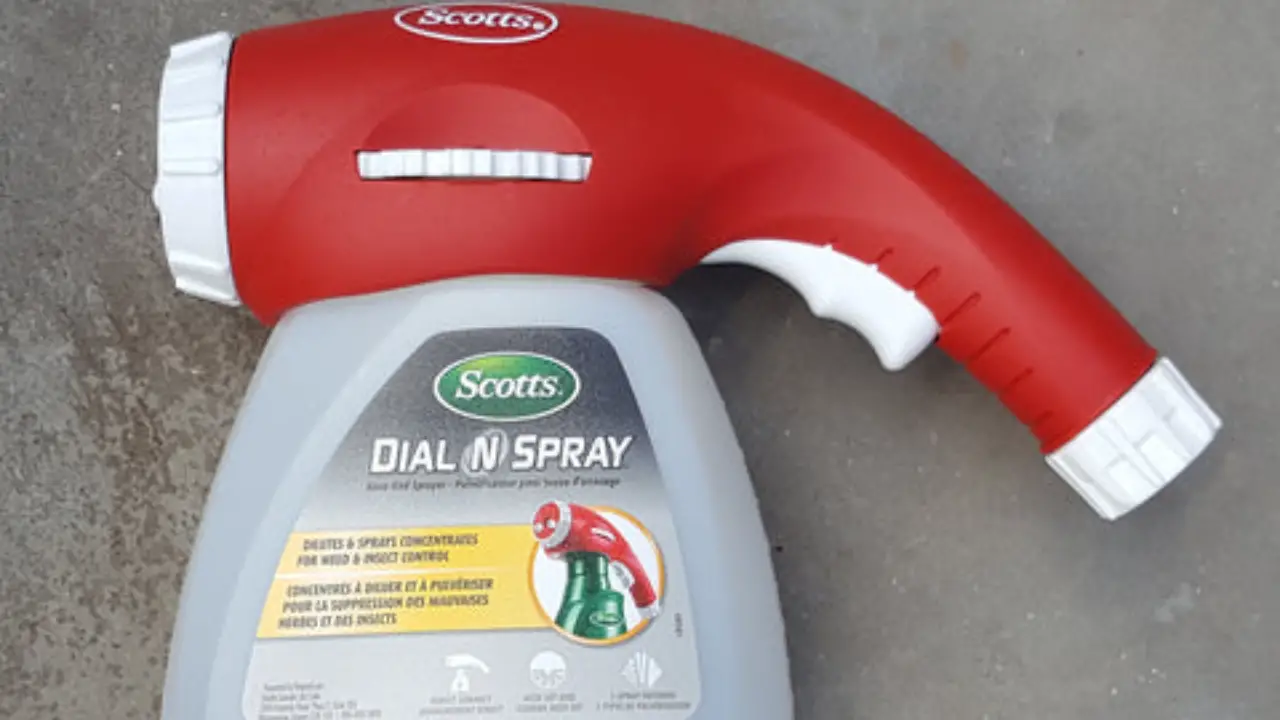
The hose-end sprayer conversion chart is useful for determining the correct amount of product to use when spraying your lawn or garden. By referencing the chart, you can easily calculate the proper dilution ratio based on the desired concentration and the size of your spray area.
This ensures that you are applying the correct amount of product for optimal results without wasting any excess. Whether treating weeds, fertilizing your plants, or applying insecticides, using the conversion chart can help you achieve an accurate rate and effective application every time.
Tips For Accurate Application Of Hose End Sprayer
Accurate application of a hose-end sprayer is important to ensure that you apply the correct amount of product to your lawn or garden. By following these tips, you can accurately apply your hose end sprayer and effectively treat your lawn or garden. Here are some tips to help you achieve accurate application:
- Please Read The Manufacturer’s Instructions: It is important to read and understand them before using an adjustable hose-end sprayer. This will provide you with information on how to properly set up and use the sprayer for accurate application.
- Calibrate The Sprayer: To ensure accurate application, calibrate the sprayer before each use. This involves measuring the output of the sprayer and adjusting the settings accordingly.
- Follow Recommended Dilution Rates: Different products may require different dilution rates. Following the manufacturer’s recommended dilution rates is important to ensure accurate application.
- Apply In Ideal Conditions: For optimal results, it is best to apply products using a hose-end sprayer when weather conditions are calm and there is no rain in the forecast. This will help prevent drift and ensure that the product is evenly distributed.
Things To Keep In Mind While Using A Conversion Chart For Hose End Sprayers
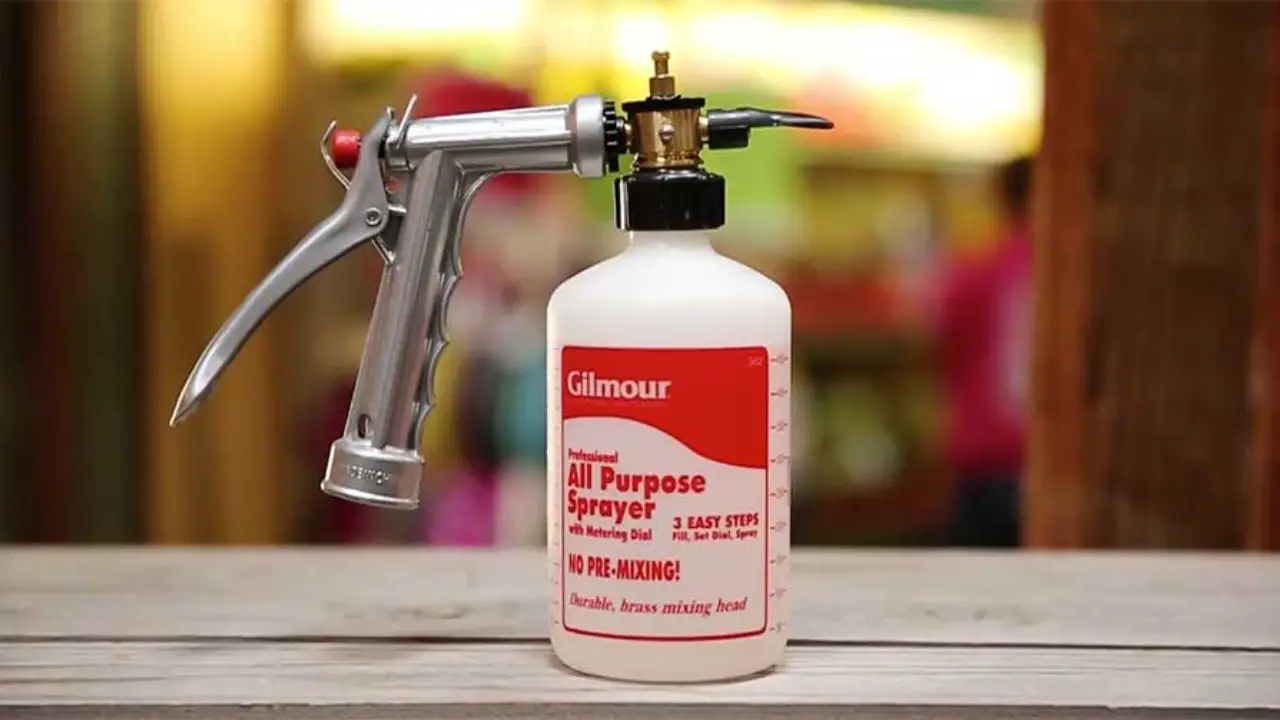
When using a conversion chart for hose-end air sprayers, remember a few important things. First, it’s crucial to accurately measure the amount of liquid or concentrate you need for your specific application. Using too much or too little can negatively affect the product’s effectiveness. Secondly, be aware of any dilution ratios specified by the manufacturer.
These ratios indicate the proper amount of concentrate to water for optimal results. Lastly, always follow the instructions provided with your hose end sprayer and double-check that you are using the correct settings and measurements for your desired outcome. By taking these precautions and being mindful of the details, you can ensure proper usage of your hose-end sprayer bottle and achieve the desired results in your gardening or cleaning tasks.
Tips For Maintaining And Cleaning Your Hose End Sprayer
Maintaining and cleaning your hose end sprayer is essential to ensure its longevity and optimal performance. By following these maintenance and cleaning tips, you can extend the lifespan of your hose end sprayer and ensure consistent and effective spraying for all your gardening and lawn care needs. Here are some helpful tips to keep your sprayer in good condition:
- Rinse After Every Use: Thoroughly rinse the sprayer with clean water after each application. This will help remove any residue or leftover product, preventing clogs and buildup.
- Disassemble For Deep Cleaning: Regularly disassemble the sprayer to clean all its components. This will allow you to reach areas that are not easily accessible during a simple rinse. Use warm, soapy water and a brush or sponge to remove dirt or debris.
- Check For Damage: Inspect the sprayer for any signs of damage or wear, such as cracks, leaks, or broken parts. Replace any damaged components promptly to maintain proper functionality.
- Lubricate Moving Parts: Apply lubricant to any moving parts of the sprayer. Such as the trigger mechanism or control valve, to ensure smooth operation and prevent rusting.
- Store Properly: When not in use, store the sprayer in a cool, dry place away from direct sunlight and extreme temperatures. This will help preserve its integrity and prevent deterioration.
The Benefits Of Using A Hose-End Sprayer
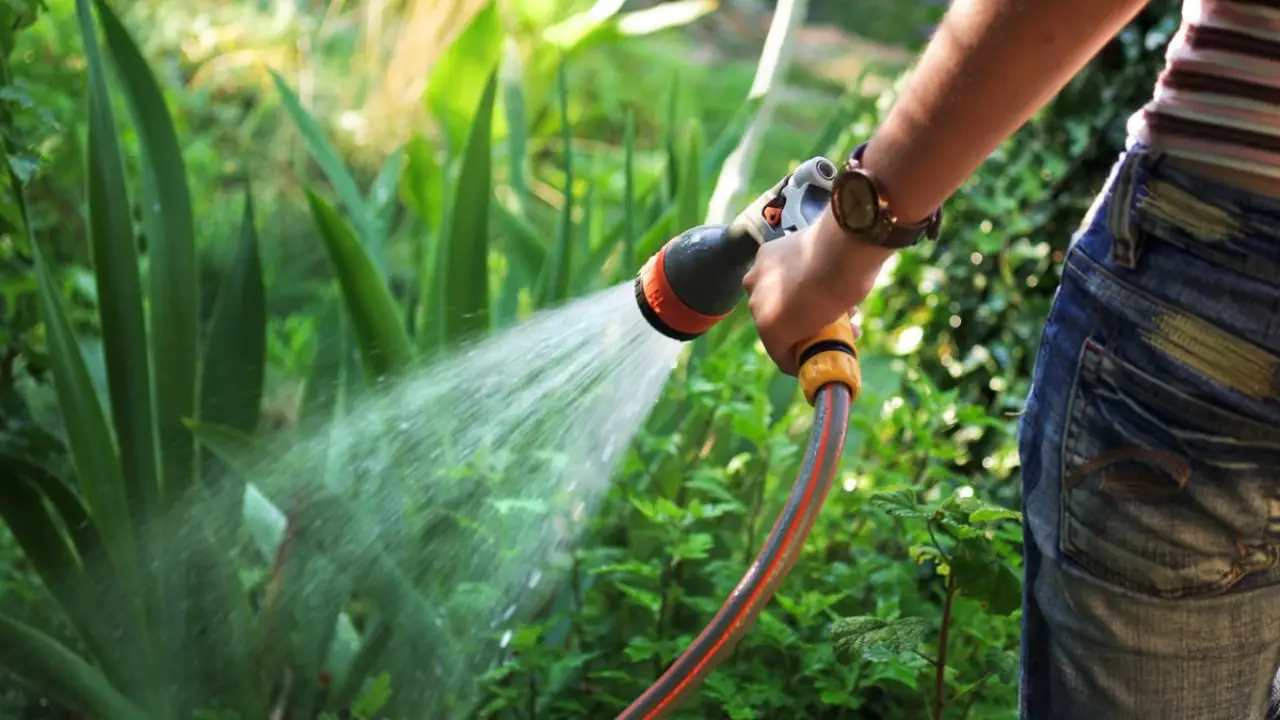
A hose-end sprayer can offer several benefits when applying pesticides, fertilizers, and other lawn or garden care products. Here are some key advantages of using a hose-end sprayer.
This helps to maximize the effectiveness of the products while minimizing waste. Overall, using a hose-end sprayer can make your gardening and lawn care tasks more efficient and effective.
- Convenience: Hose end sprayers are easy to use and require minimal effort. Attach the sprayer to your garden hose, and you’re ready.
- Uniform Application: Hose end sprayers provide a consistent spray pattern, ensuring the product is evenly distributed across your lawn or garden.
- Time-Saving: With a hose-end sprayer, you can cover large areas quickly and efficiently. You are saving time and effort compared to manual application methods.
- Adjustable Dilution Ratios: Many hose end sprayers come with adjustable dilution ratios, allowing you to customize the concentration of the product being applied.
- Versatility: Hose end sprayers can be handy for various applications, including insect fungus control, weed control, fertilization, and more.
Conclusion
Understanding and utilizing the hose end sprayer conversion chart is crucial for accurate and effective spraying. It helps you achieve the desired concentration of chemicals, ensuring optimal results while minimizing waste by familiarizing yourself with the key components of hose end sprayers and interpreting the conversion chart.
You can fine-tune your spraying technique and improve efficiency. Remember to follow the guidelines provided in the conversion chart. You are taking into account factors that may influence the efficiency of your hose end sprayer.
Using the conversion chart effectively can achieve precise mixing ratios, saving time and resources. To unlock the secrets of the hose-end sprayer conversion chart and enhance your spraying technique, properly read the above outline.
Frequently Asked Questionstion
[rank_math_rich_snippet id=”s-7826cd54-2c36-4800-a0ac-872ea7733bd1″]

I am passionate about home engineering. I specialize in designing, installing, and maintaining heating, ventilation, and air conditioning systems. My goal is to help people stay comfortable in their homes all year long.
